
| NEXT >> Animation |
| << PREV Animation |
 |
theimage.com | how to facet | |
| gemstone main | cabochon creation | ||
| min data |
|
| Czochralski Process | |||
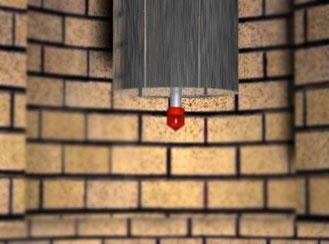 |
The Verneuil has some draw-backs for some ruby uses. It tends to produce crystals with high internal strain. Another method needed to be developed that could produce "whole boules" with less or no strain, especially for lazer rod use.
The Czochralski process begins, like the Verneuil process with a movable seed crystal. Unlike the Verneuil process the crystal is located above a liquid melt and not below a flame. The seed is placed on a moveable stage. |
||
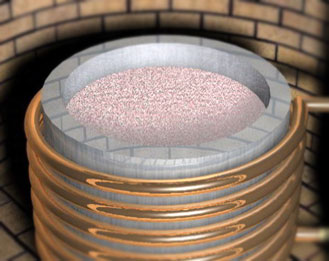 |
The growth mixture is placed in an iridium crucible. For pure corundum, only pure aluminum oxide is used. To get the various colors, mixtures of aluminum oxide and the appropriate colorant(s) are premixed in the crucible.
The iridium is used because its melting temperature is higher than that of the mixture. Iridium melts at 2442 C and the aluminum mixture melts around 2050 C. |
||
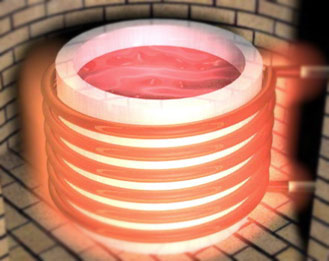 |
A control system is used to maintain the temperature of the melt just a few degrees above the 2050 C of the alumia. In this case the atmosphere of the kiln is mostly nitrogen to keep the iridium crucible form oxidizing and reacting with the melt. | ||
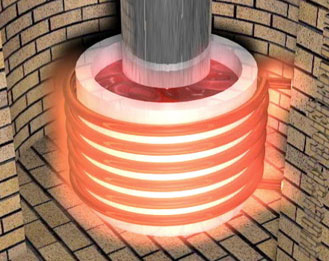 |
The seed crystal is lowered into the melt and just touches the top of the liquid. The melt goes into equilibrium with the seed crystals exterior and the seed is slowly withdrawn.
If the temperature is too high, the seed melts and another must be added. If the temperature is too low, then the seed initiates the total crystallization of the melt. Temperature control is critical in this process. |
||
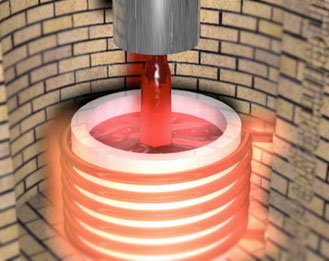 |
As the seed crystal is withdrawn (and rotated- about 30 rpm) the newly formed crystal grows downward with the natural pull of gravity.
The pull rate is about 25mm per hour. To create nearly perfect crystals the process is computer controlled using secondary measurements to maintain nearly perfect pulling speed and rotation. The secondary measurements may involve weighing the crucible during the process and continually calculating the weight loss of reactant. Or measuring spot temperatures near the crystal liquid contact point and adjusting the pull accordingly. Crystals as large as 4-5 inches in diameter have been produced with lengths over 1 to 2 feet. |
||
| If you would like to see the process animated you may see it here. It is in Quicktime format (mp4 compressor) and is about 4.1 MB in size.
Use the back arrow key to return to this page after playing. |
|||